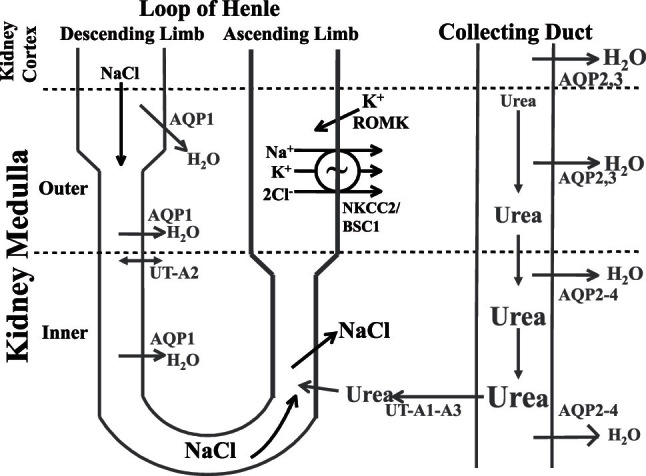Figure 1.

Transport proteins involved in the urinary concentrating mechanism. In the outer medulla, active NaCl reabsorption via NKCC2/BSC1 in the thick ascending limb of the loop of Henle generates a hypertonic medullary interstitium. This concentrates NaCl in the lumen of the thin descending limb of the loop of Henle by osmotically removing water via AQP1 water channels. In the inner medulla, passive NaCl reabsorption exceeds urea secretion. Water is reabsorbed from the collecting duct, in the presence of vasopressin, via AQP2 in the apical plasma membrane and AQP3 and AQP4 in the basolateral plasma membrane. Urea is concentrated in the collecting duct lumen until the fluid reaches the urea-permeable terminal inner medullary collecting duct where urea is reabsorbed into the inner medullary interstitium via the UT-A1 and UT-A3 urea transporters.
